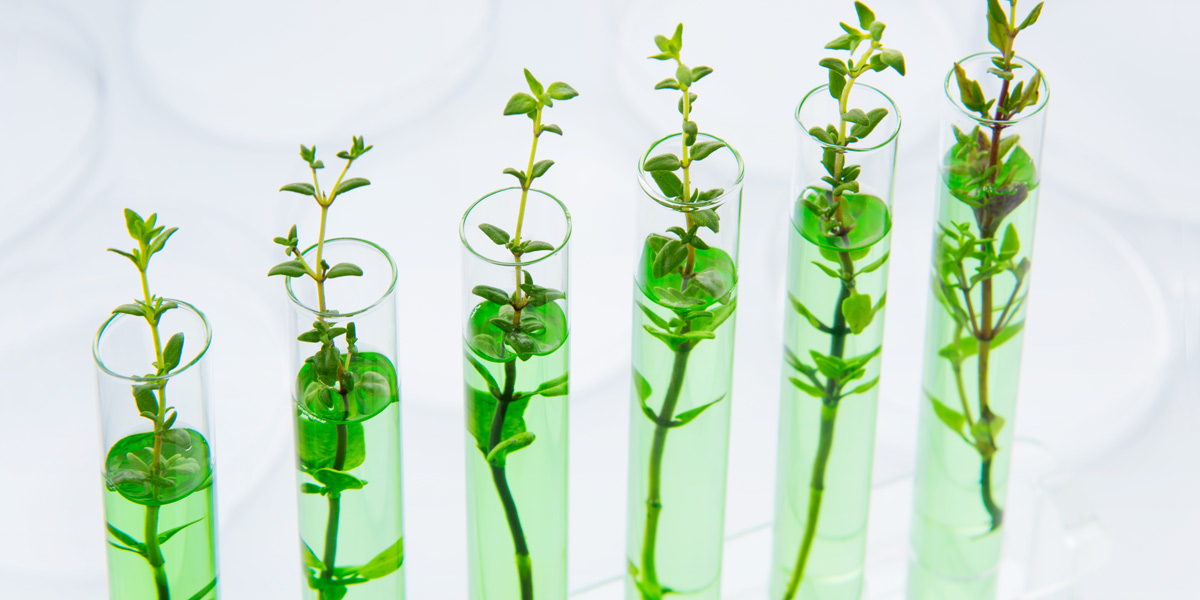
Risk assessments and labelling needed for each "new GMO" to protect people and environment
The US Department of Agriculture (USDA) has already given non-regulated status to more than 20 plants genetically engineered with so-called genome editing techniques, according to research by Testbiotech. None of the applications registered at USDA were referred for further more detailed assessment. The Testbiotech report published today shows that there are, however, significant differences in methods of production, traits, and risks of the non-regulated plants, in comparison to those derived from conventional breeding.
These differences are not caused by the newly introduced gene sequences but by the patterns of genetic changes. "Gene-scissors" such as CRISPR/Cas can delete whole families of gene variants all at once – but this is either impossible or barely possible with current conventional breeding methods. A further specific difference is that in a first step, older methods such as the "gene gun" (biolistic method) or gene transfer via Agrobacterium tumefaciens are commonly used. However, USDA completely ignores these differences to conventional breeding.
The plant species listed include pennycress, green foxtail, potatoes, camelina, alfalfa, maize (corn), rice, soybeans, tobacco, tomatoes, wheat, and a mushroom. The exact intended traits of the plants cannot always be precisely determined. In many of the registered documents no information is provided because the precise description of the targeted genes is categorised as confidential business information (CBI). It is also sometimes difficult to find information on the progress of developments, though it does appear that applications are filed at an early stage. Generally it has to be assumed that not all of the plants registered will come on to the market. On the other hand, some companies have announced to investors that some specific plants will be on the market very soon.
Essentially, conventional breeding is always based on a wide range of genetic and biological diversity found in natural populations, as well as in all previously bred plant and animal varieties and breeds. In addition, new mutations happen continually and specific triggers can speed up the occurrence of mutations. Not all of these mutations are considered beneficial. In order to achieve the desired results, breeders screen natural populations and previously bred varieties for specific traits. Subsequently, plants are chosen and then grown and crossed to achieve an optimal combination of genetic information. The natural mechanisms of inheritance and gene regulation cannot be bypassed with this method.
Genetic engineering on the other hand uses direct technical and targeted intervention to establish new traits. These technical interventions bypass natural biological mechanisms governed by evolution, inheritance and gene regulation, and can therefore be much faster than conventional breeding. Since genetic engineering intervenes directly in the genome, the resulting plants and animals can be very different to those from conventional breeding. Therefore, it is necessary to treat these organisms with caution before any environmental releases take place or they are approved for use in food production.
In the EU, all GMOs must undergo a mandatory risk assessment. In the USA, on the other hand, there are no such legal requirements. There are nevertheless also stakeholders in the EU who want to market their products as quickly as possible. Their goal: plants and animals and related products developed with new genetic engineering techniques should be released without undergoing an approval process and sold without labelling. If however the new plants are marketed without regulation or approval process, then neither farmers nor gardeners would know what they are actually cultivating. The plants could also be crossed and combined with others, without combinatorial effects being investigated in detail. Consumers would lose their freedom of choice since they would no longer be able to distinguish whether the products were genetically modified or not. Even the authorities would not know which plants were imported from which countries, or what they needed to look for if harm occurred to people or the environment.
Christoph Then summarises the Testbiotech findings: “The risks of genetically engineered organisms have to be assessed in each and every case. Moreover, if organisms are known to show potential for environmental spread or might develop such characteristics, efficient measures and restrictions have to be put in place to prevent gene flow.”
Additional recommendations in the report include:
* all genomic data that provide information on the exact genetic changes should be made publicly available in databases;
* labelling should be mandatory and measures should be taken to protect conventional production in order to protect freedom of choice for breeders, farmers and consumers;
* state run programs should be initiated with the participation of civil society (especially nature protection, environmental and consumer rights groups) to agree on goals in research and development as well as research in risk assessment.
Further information:
Link to the Testbiotech report: http://www.testbiotech.org/en/content/am-i-regulated-en
Link to APHIS: www.aphis.usda.gov/aphis/ourfocus/biotechnology/am-i-regulated/Regulated_Article_Letters_of_Inquiry










